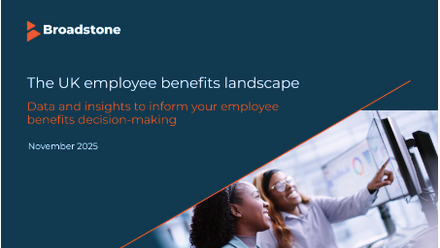Why inclusivity matters – ways to include all of your staff in a physical wellbeing strategy

Counting the cost
Even here though, there’s a potentially strong counter-argument in terms of the cost of relevant benefits and services perhaps being outweighed by the impact of medical trends on insurance claims costs. The drivers of which include medical technology, new drugs, ageing populations, patient demand and changes in physician treatment patterns.
Underlying these drivers is the fact that upwards of 40 per cent of individuals in many countries are failing to do even moderate activity, defined as just 150 minutes per week. Sedentary lifestyles, combined with problems such as being overweight, binge drinking, smoking and stress have all contributed to the rise in NCDs.
All of this translates into annual – and somewhat unsustainable – double-digit medical trend increases facing healthcare ecosystems, including health insurers, reinsurers, captives and consequently you – the employer.
Estimates can vary dramatically from country to country, but most surveys conducted by brokers and consultants such as Aon's Global Medical Trend Rates (2018) report, Mercer-Marsh's 2018 Medical Trends Around the World analysis and Willis Towers Watson's Global Medical Trends Survey Report (2018), have placed global medical trend increases at just under 10 per cent. This is more than three times general inflation (the consumer price index), which means that healthcare costs are growing disproportionately to other costs of multinational companies.
For example, our colleagues in the US estimate that a company with medical insurance costs of $90 million today could conceivably expect to pay $238 million ten years from now, absent of any intervention.
Managing and mitigating healthcare risk is no mean feat but there are a number of low to no cost ways of helping.
Top five tips to help make physical wellbeing all-inclusive
1. First, don’t try to tackle this alone. Get your consultants and providers involved – they have a vested interest in helping you out. All-inclusive and relevant support requires integrated thinking and partnership working, across your suppliers and across internal business departments.
2. Find out your employees’ needs and key healthcare risk drivers. Again, work with your existing suppliers to help out. According to research of multinational companies conducted recently by Generali UK, in conjunction with HR Grapevine, mood surveys represent the top method used to find out employee needs. The results of these should be used in conjunction with other sources of data to help ensure as meaningful a picture as possible. Strategy discussions with intermediaries come second (46 per cent), which is great. But only a fifth (19 per cent) of respondents involved their group income protection (IP) provider and a third (34 per cent) their private medical insurance provider.
3. Look at maximising your existing benefits to ensure wellbeing and manage absence. For example, work with your providers and consultants to make the most of all the added value wellbeing benefits and services included with your group IP and healthcare policies.
4. Ensure your duty of care responsibilities are extended to contractors as well as employees. Consider leveraging your scale and buying power to offer competitive voluntary and self-pay benefits.
5. Inclusivity applies to the support your suppliers should be providing to you – the employer. For example, for group IP claimants, providers should support HR as well as the employee with regards to navigating employer obligations to make ‘reasonable adjustments’. The same applies to mental health line manager training, ensuring staff feel cared for and supported during times of poor mental and physical health.
The author is Simon Thomas, director – UK employee benefits, Generali.
This article was provided by Generali.
Supplied by REBA Associate Member, Generali Employee Benefits Network
Generali Employee Benefits' solutions are to protect and enhance the wellbeing of their workforce.







